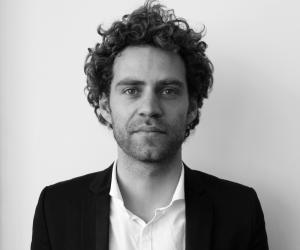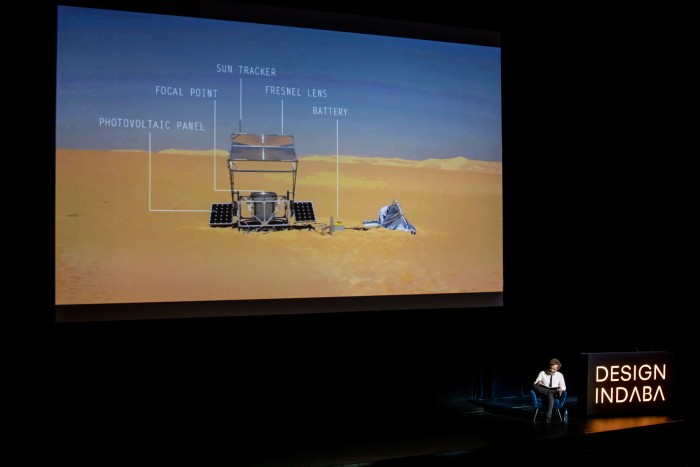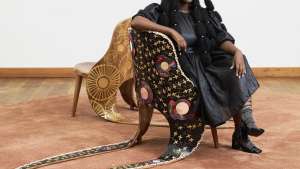A designer walks into a desert…
It’s a lame joke format, but this is how Markus Kayer’s talk kicked off at Design Indaba Conference 2019.
Working at the intersection of design, technology and biology, Kayser shared what seemed like the endless possibilities that can be achieved with more experimentation within those spaces.
The desert was the site of his first such experiment, Suncutter. The machine he created consisted of one small solar cell and would laser cut using the sun’s direct energy. The result was plywood sunglasses shaped by the machine.
“Then it was not really about changing manufacturing for the better, but rather a naive search for the vitamin I was lacking in cloudy London,” said Kayser of his sun-drenched experiment.
But while the desert may seem like the last place to test for prototypes, given its vast barrenness, he views it in the contrary. “All this emptiness was abundance - it was rich in energy but also material,” referring to the sun and sand.
Empowered with this new knowledge and proof of the potential of the desert, Kayser embarked on another project there. Solar Sinter built on the initial ideas of Suncutter, by exploring a pure production process using only the resources available in the desert.
With the translator as the heart of the project, it doesn’t need anything but its immediate environment to produce glass objects. Sand and sunlight are the inputs, while 3D printed glass objects are the outputs.
In a show of the new territory Kayser had unlocked with this project, Kayser says, “Solar Sinter was a vehicle to transcend my idea beyond my own imagination,” sharing that this possibility opened up questions like, ‘can you build houses? Can you build on the moon?’
His work soon caught the attention of Neri Oxman and the team at MIT’s Mediated Matter Group, who themselves are at the forefront of research in the potential of biology and digital fabrication processes.
Kayser’s inaugural research here investigated the biological processes of silk worms particularly the way they spin cocoons, and how this could be translated into technology.
Called Silk Pavilion, the project is a collaboration between biology and technology, with an emphasis on involving the biological process into the fabrication, rather than mimicking it.
“Nature is the input, output and compiler, merely being guided by subtle technology for a desired output,” he explains.
Fiberbots was the culmination of Kayser’s PhD research. It’s a multi-aging robotic fabrication that builds and climbs its own structure. Put simpler, picture architectural-scale worms building themselves into existence all the way up.
He says the project is a small stepping stone within a larger dream that sees the world adopting a new kind of architecture. “I believe that when we tackle new approaches to architecture such as swarm construction, we should not try to recreate the existing ways of building, such as stacking bricks.
But I also aim for a new kind of architecture that reflects the methods that gave birth to it, and hopefully be surprised by the outcomes that we couldn’t really think of before.”
With the bots controlled by WiFi and reaching a height of 4.5 metres using 16 robots in a mere 48 hours, indeed the possibilities do seem endless.
Kayser’s experimentation demonstrates a clear theme of working together with the environment to imagine novel, sustainable solutions. It’s a very necessary - urgent, even - requirement to future-proof existing practices and means of production.
“Ultimately, i imagine a future where the design of a building is largely influenced by the environment that it is placed on,” he says.
He concludes with an appeal to designers to effect change: “The promise of design is to inspire industry to follow suit in the quest for better methods to produce using solar energy and abundant resources.”
Watch the full talk:







